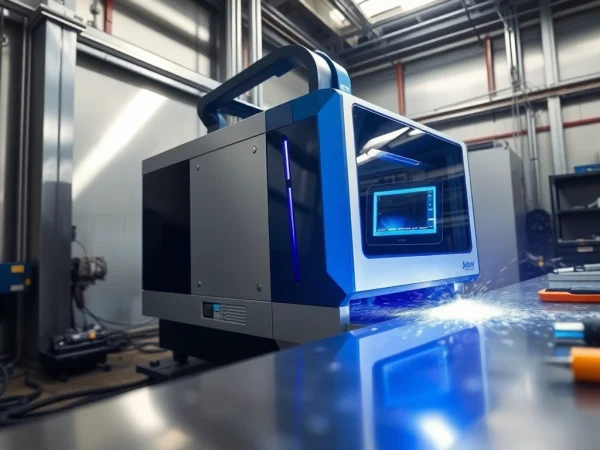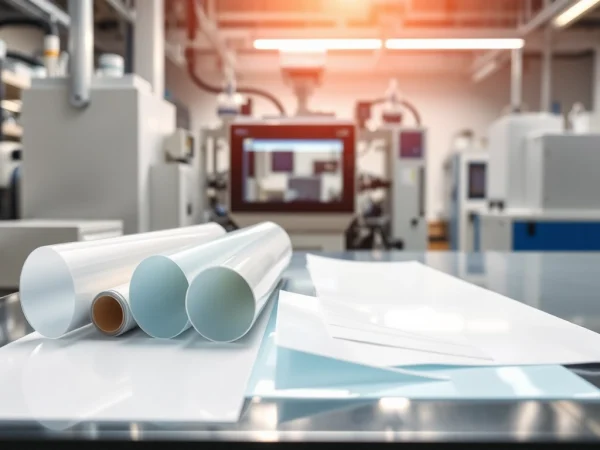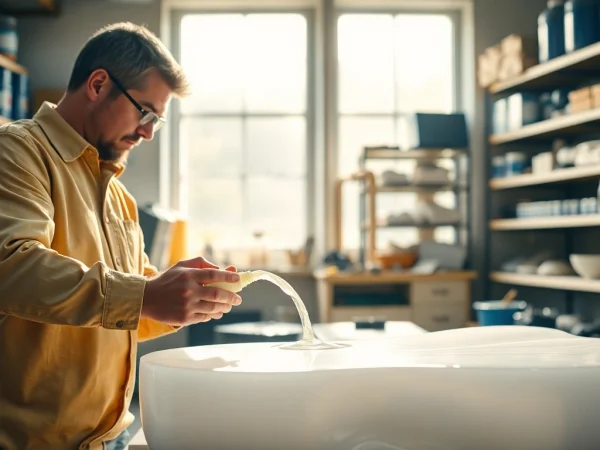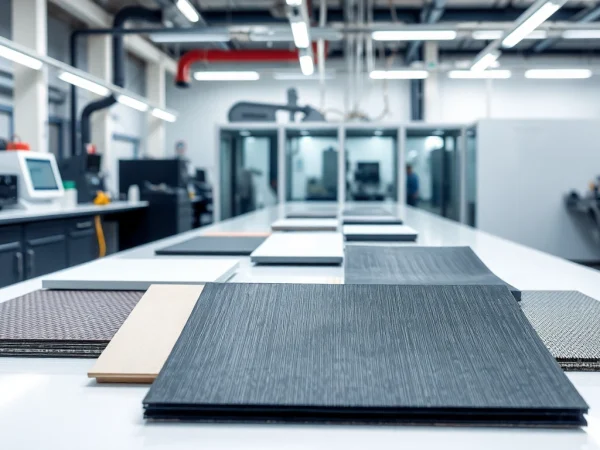Mastering Laminating Resin: Techniques, Applications, and Benefits
Introduction to Laminating Resin
Laminating resin is a versatile and essential material widely utilized in construction, marine applications, automotive designs, and many more fields. Its unique properties make it ideal for creating strong and durable structures, enhancing the performance of composites, and providing superior adhesion in various applications. In this comprehensive article, we will delve into the key characteristics, benefits, and applications of laminating resin, explore the different types available, share best practices for usage, and discuss common challenges along with their solutions.
What is Laminating Resin?
Laminating resin is a type of polymer resin used primarily in the process of laminating. It acts as a binding agent, adhering layers of material together to create a composite with enhanced strength and durability. The two primary categories of laminating resin are polyester and epoxy, each having distinct properties tailored to specific applications. When cured, laminating resin forms a rigid structure that supports various fabrication endeavors, particularly those involving fiberglass or other reinforcement materials.
Key Properties and Benefits
The appeal of laminating resin lies in its unique properties. Some of the key benefits include:
- High Strength-to-Weight Ratio: Laminating resin creates strong bonds between materials without adding excessive weight, making it ideal for applications in aviation, automotive, and marine industries.
- Weather Resistance: It offers excellent resistance to ultraviolet (UV) light, moisture, and harsh environmental conditions, ensuring longevity and durability.
- Versatility: Laminating resin can be used with a variety of substrates, including fiberglass, carbon fiber, and wood, making it suitable for a broad range of applications.
- Custom Formulation: Different types of laminating resin can be engineered to meet specific performance criteria, such as varying curing times, viscosity levels, and flexibility.
- Excellent Adhesion: It exhibits superior bonding capabilities that help in creating seamless and robust composite materials.
Applications of Laminating Resin
Laminating resin is extensively used in diverse industries. Some notable applications include:
- Marine Industry: Used in building yachts, boats, and other watercraft, laminating resin provides the necessary strength and waterproofing essentials to withstand harsh marine conditions.
- Automotive Sector: It is key in fabricating lightweight components for vehicles, ensuring better fuel efficiency and performance.
- Construction and Architectural Design: Laminating resin is utilized for creating structural components, providing added strength and aesthetic enhancement in building projects.
- Sports Equipment: Many high-performance items like surfboards, kayaks, and bicycles are produced using laminating resin for its lightweight and durable characteristics.
- Art and Crafting: Artists and hobbyists use laminating resin for embedding objects, creating jewelry, and crafting high-gloss finishes on various materials.
Types of Laminating Resin
Polyester Laminating Resin
Polyester laminating resin is one of the most commonly used types due to its cost-efficiency and effective bonding attributes. This type of resin is often utilized in constructing fiberglass products, especially in the marine industry. Key characteristics include:
- Fast Cure Times: Polyester resin cures quickly, allowing for rapid project completion.
- Lower Viscosity: Generally has a lower viscosity, making it easier to work with during the application process.
- Cost-Effective: Typically more affordable than other resin types, making it an attractive option for larger projects.
Epoxy Laminating Resin
Epoxy laminating resin is known for its superior strength and chemical resistance compared to polyester. It is often employed in applications requiring high durability and precision. Notable features include:
- Enhanced Bonding Strength: Provides a stronger bond between layers, making it suitable for high-stress applications.
- Resistance to Chemicals: Epoxy laminating resin exhibits excellent resistance to various solvents and chemicals, making it ideal for industrial applications.
- Low Shrinkage: It has minimal shrinkage upon curing, ensuring tight-fitting bonds without gaps or misalignments.
- Flexible Curing Options: Various curing methods and hardeners are available to tailor the resin properties as per project requirements.
Comparative Analysis of Resin Types
When choosing between polyester and epoxy laminating resin, it is essential to consider the specific requirements of the project. A comparative analysis includes:
| Property | Polyester Laminating Resin | Epoxy Laminating Resin |
|---|---|---|
| Cost | Generally lower | Generally higher |
| Curing Time | Faster | Slower |
| Adhesion Strength | Moderate | High |
| Chemical Resistance | Moderate | High |
| Usage | Marine, automotive, and crafts | Professionals and high-stress applications |
Best Practices for Using Laminating Resin
Preparation and Safety Measures
Prior to working with laminating resin, proper preparation and safety measures are crucial. Here are some guidelines:
- Personal Protective Equipment (PPE): Always wear gloves, goggles, and a respirator to protect against fumes and skin contact.
- Ventilation: Work in a well-ventilated area to mitigate the inhalation of harmful vapors.
- Surface Preparation: Ensure that surfaces to be laminated are clean, dry, and free from contaminants like dust and oil to maximize adhesion.
- Mixing Ratios: Carefully adhere to the manufacturer’s recommended mixing ratios for resin and hardeners to achieve optimal curing.
Application Techniques
Understanding effective application techniques can significantly improve the outcome of projects using laminating resin. Consider the following methods:
- Brush Application: Ideal for small projects or detailed work, brushes allow for controlled application and even spreading of the resin.
- Roller Application: Rollers are effective for larger flat surfaces, providing a smooth spread and reducing the occurrence of bubbles.
- Vacuum Bagging: Employing vacuum bagging can enhance the final product’s strength by compressing the layers during curing.
- Spray Application: For extensive surface area or high-production work, specialized spray equipment can ensure a consistent application.
Curing and Finishing Tips
Curing is a critical phase that determines the strength and aesthetic quality of the final product. Here are some best practices for curing and finishing:
- Optimal Curing Conditions: Maintain recommended temperature and humidity levels during the curing process to facilitate chemical reactions effectively.
- Post-Curing: Consider post-curing in controlled conditions to enhance the properties even further once the resin has cured.
- Sanding and Finishing: If needed, lightly sand the surface after curing to prepare it for painting or applying additional coatings.
Common Issues and Solutions
Dealing with Bubbles and Imperfections
Bubble formation and surface imperfections are common issues encountered during the lamination process. Solutions include:
- Proper Mixing: Ensure thorough mixing of resin and hardener to prevent unreacted materials that could result in bubbles.
- Applying Heat: Using heat gently during the curing process may help in releasing trapped air bubbles.
- Vacuum Degassing: Employing vacuum pumps to degas the mixed resin before application can minimize bubble formation.
Adhesion Problems with Laminating Resin
Weak adhesion can lead to failure in laminating. Here are some strategies to prevent adhesion issues:
- Surface Treatment: Use appropriate surface treatments or primers to enhance bonding capability with substrates.
- Compatibility Checks: Ensure that the laminating resin is compatible with the material being bonded.
- Layering Technique: Apply the resin in layers, allowing partial curing between coats to maximize adhesion efficacy.
Enhancing Performance of Laminating Resin
Boosting the performance qualities of laminating resin can be achieved through various approaches:
- Additives: Utilize specific additives to enhance characteristics like flexibility, UV resistance, and cure speed.
- Testing: Running thorough tests and evaluations can help in determining the best resin for your specific application.
- Recipe Modifications: Adjusting mixing ratios, using different hardeners, or modifying the application process can yield better performance results.
Future Trends in Laminating Resin Technology
Innovations in Resin Formulations
The laminating resin industry is witnessing continuous evolution, focusing on enhancing performance through advanced formulations. Some trends include:
- Bio-Based Resins: Growing demand for sustainable materials is driving research into bio-based laminating resins derived from natural sources.
- Improved Curing Methods: Innovations in curing techniques, including UV curing and heat-assisted methods, are enhancing production efficiency.
- Smart Resins: Ongoing developments in smart resin technologies that can monitor conditions and self-repair are paving the way for advanced applications.
Environmental Considerations
As industries are under pressure to adopt more sustainable practices, laminating resin technology is also addressing environmental concerns. Challenges include:
- Reduction in Volatile Organic Compounds (VOCs): Manufacturers are developing low-VOC or VOC-free laminating resins to minimize environmental impact.
- Circular Economy Initiatives: There is a focus on recycling and reusing resin materials to create a circular economy in the manufacturing process.
Impacts on the Crafting Industry
Technical advancements in laminating resin present new opportunities and challenges for the crafting industry. Some implications include:
- Enhanced Creativity: New formulations allow crafters to explore unique applications, leading to innovative designs and products.
- Skill Development: As resin technology evolves, there is an increasing need for skill development and training among craftsmen to keep up with new methods and innovations.










